OU Chemistry professor participating in all-Michigan research effort
Distinguished Professor Xiangqun Zeng and her OU group is collaborating with University of Michigan and Michigan State University researchers in an effort to create wearable devices that monitor exposure to air pollutants
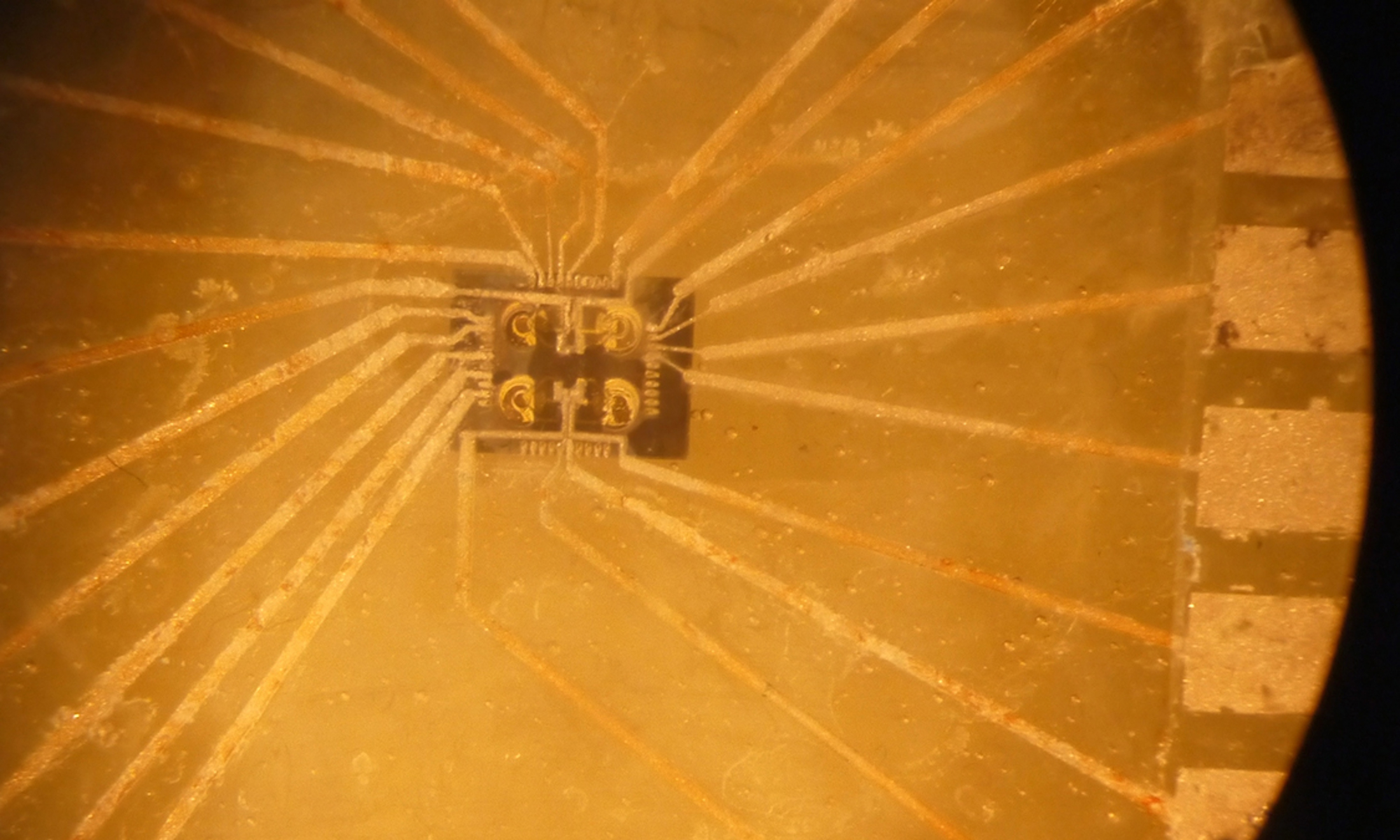
The new grant work will build on MSU Professor Andrew Mason's past work, some of which is shown here under a microscope. Tiny electronics and channels for fluids will be at the heart of the team's sensing devices.
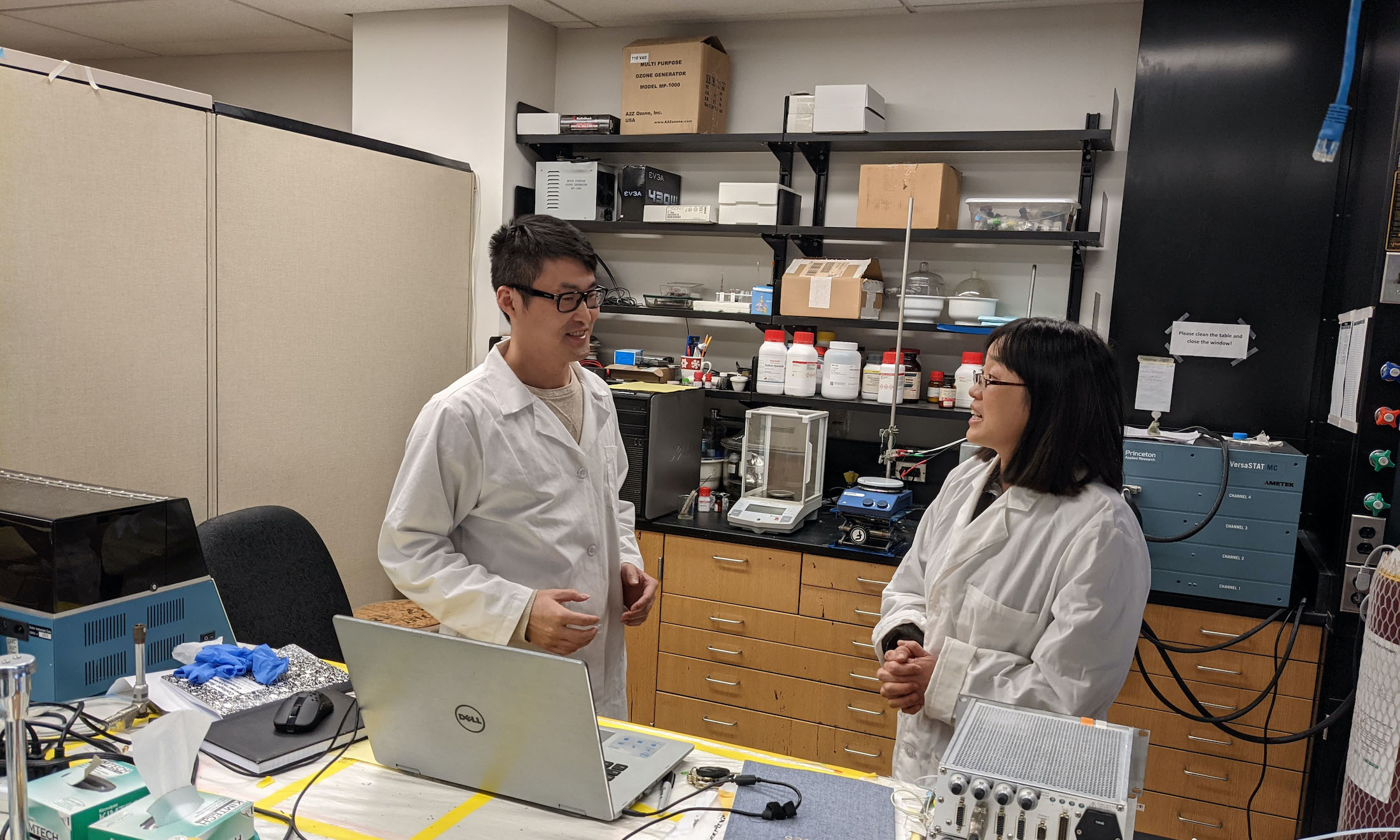
At Oakland, Dr. Zeng, right, will work with her group leader Dr. Xiaojun Liu and graduate students to develop an innovative, highly sensitive particulate sensing technology to classify the chemical natures of the ambient particulates.
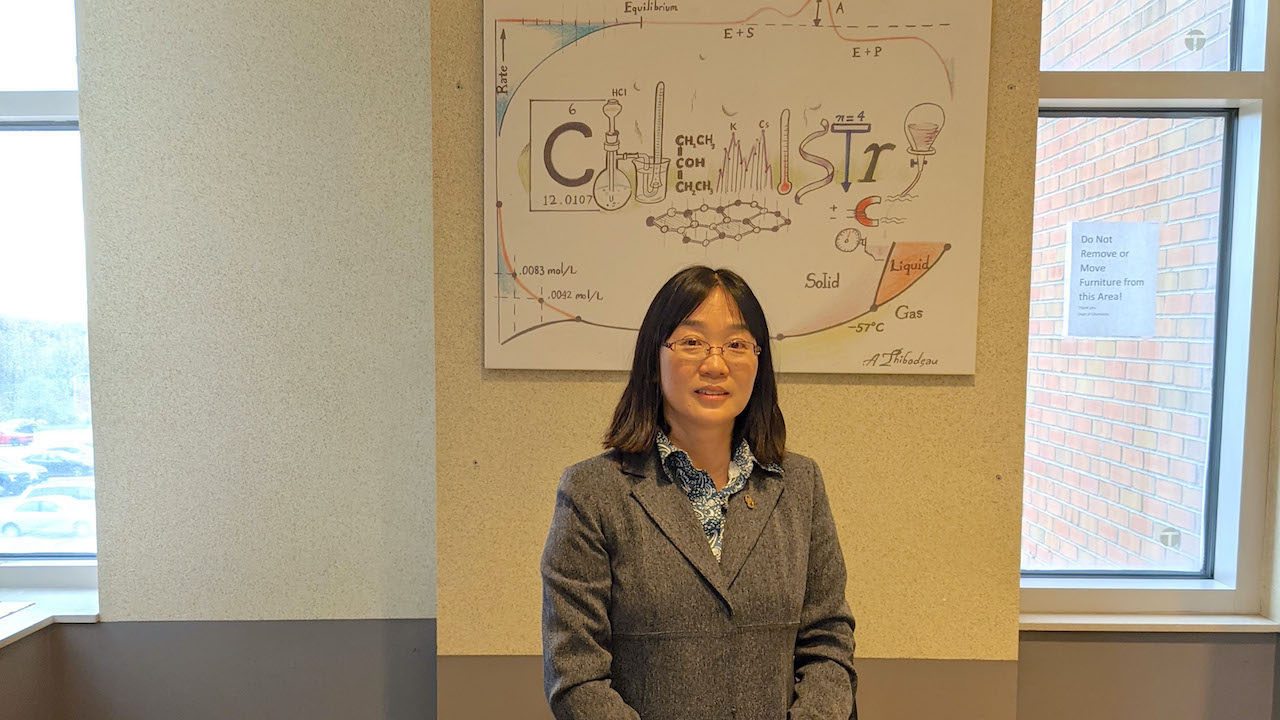
Air pollution is responsible for an estimated 7 million premature deaths every year, according to new air quality guidelines published recently by the World Health Organization. That’s roughly 1 in 9 deaths globally.
But except in extreme cases such as wildfires that can spread smoke hundreds of miles, air quality is easily overlooked. Many of the pollutants that affect hearts, lungs and brains are invisible. And current technologies that monitor air pollution can take weeks to collect and process data.
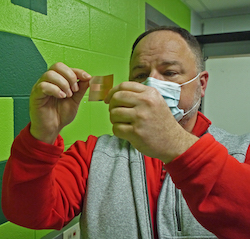 |
| MSU Professor of Electrical and Computer Engineering Andrew Mason holds a flexible electronic circuit designed by his lab. |
To address these concerns, Oakland University Distinguished Professor of Analytical Chemistry, Xiangqun Zeng is teaming up with Andrew Mason, professor of Electrical and Computer Engineering from Michigan State University and J. Timothy Dvonch, associate professor, Environmental Health Sciences from the University of Michigan, on a new project to empower individuals to better protect themselves and their communities from air pollution in real time.
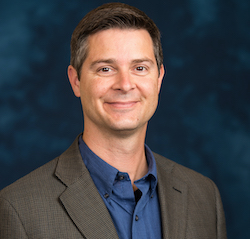 |
| J. Timothy Dvonch, associate professor, Environmental Health Sciences from the University of Michigan |
With the support of a $2.78 million grant, the team is creating wearable devices that can track exposure to pollutants and help people steer clear of pollution. The grant is funded by the National Institute of Environmental Health Sciences, one of the National Institutes of Health.
“The whole idea is that the technology we build would go into a future fitness watch,” said Mason. “This would generate data at a level that’s nowhere near available right now. We could deliver information back to the wearer and it would help researchers better understand the health impacts of air pollution.”
The wearable devices would also share information about air quality to create a map of conditions, similar to how smartphone apps can map traffic and navigate drivers to the least congested routes.
“Say you’re going for a bike ride,” Mason said. “You could find the path that’s going to be safer than others, the one with the least exposure.”
This is the third grant that has Zeng and Mason teaming up as multiple Principal Investigators, with the other two grants focused on sensing gases in the environment. This grant work will focus on detecting and identifying pollution in the form of particulate matter, including soot and toxic metals, generated by cars, trucks and industrial sources, primarily from burning fossil fuels.
“Atmospheric gases are bad and deadly, too, but the main health impact in air pollution comes from exposure to particulate matter,” Mason said.
Particulate pollution can be especially dangerous for children and people who are pregnant. An analysis of data from the U.S. Environmental Protection Agency also found that people of color are exposed to disproportionately high amounts of particulate pollution.
A network of wearable devices would provide unprecedented data about air quality over space and time, helping inform policies and interventions to help protect the most vulnerable, the team said. But, developing those devices is no small feat. The researchers will need to build technology that can count particles, characterize what they’re made of and determine their size down to nanometer scale.
On top of all that, the team has challenged itself to become the first to fit such technology into something the size of a wristwatch.
“Currently, there is no personal monitoring device available because of the complexity,” added Zeng. “The most exciting aspect of this project is its significance and innovation.”
At Oakland University, Dr. Zeng will work with her group leader Dr. Xiaojun Liu and graduate students to develop an innovative, highly sensitive particulate sensing technology to classify the chemical natures of the ambient particulates.
“It will be a challenge to accomplish all of the project goals,” suggested Dvonch. “However, the project team is very organized and efficient and I expect this will allow us to overcome the challenges we may face.”
“We are a dream team because of our complementary expertise and our established productive collaborations,” Zeng said.
As part of the project, the team will be testing its prototypes in Metro Detroit.
“Not only will the developed monitoring devices from our project be applicable to assessing air pollution exposures across many parts of the globe, importantly our project will be able to test, evaluate and begin to address these particulate matter exposure issues right here in Michigan communities,” Dvonch said.
# # #
NOTE: Matt Davenport from University Communications at Michigan State University and Nardy Baeza Bickel, senior public relations representative at the University of Michigan contributed to this story.


 November 18, 2021
November 18, 2021